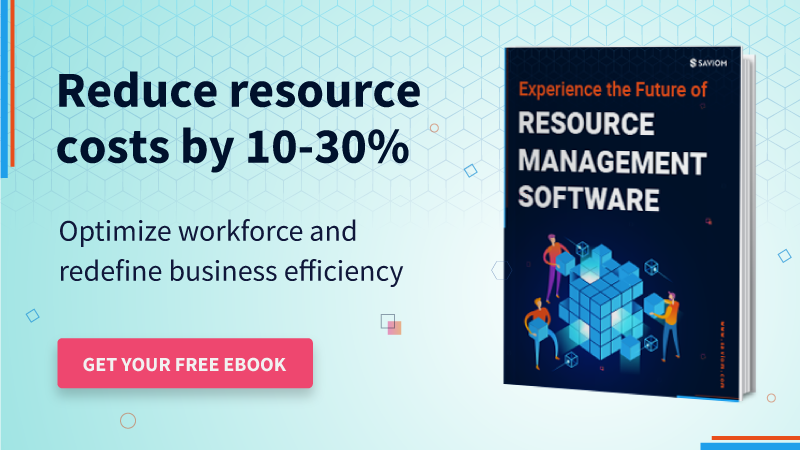The business Magnate Steve Jobs once said, ‘Innovation is the only way to win.’ This adage proves its relevance in every realm, from the business world to the tech-oriented industry. Can you imagine a world without smartphones or e-commerce? It’s a rhetorical question. A few years ago, people were also not familiar with the internet or personal computers. If it weren’t for innovative ideas and concepts, globalization and seamless connectivity would only be limited to science-fictional novels and movies.
Market demands are constantly evolving, and fostering innovation via innovation management is the only key to keep up with these evolving trends and stay relevant in the long haul. However, directing these innovative or out-of-the-box ideas in the right way to generate business value is not an easy feat.
It demands a methodical approach to ensure that the decision-makers, stakeholders, and the workforce who bring these ideas to fruition are on the same page.
This whole process of articulating an action plan to ensuring its successful execution is known as innovation management.
From giving you a breakthrough to taking your workforce health index to the next level, it offers a plethora of benefits.
This article takes you through the key components of innovation management and its significance in enhancing profitability.
Beginning with the basics,
What is the innovation management process?
Innovation management is a business discipline that aims to nurture a long-lasting, sustainable innovation process within an organization. It encapsulates a definite procedure that regulates every stage of innovation, starting from ideation to its seamless implementation in the practical world. The initiatives introduced via the innovation management process can propel the groundbreaking transformation of your business and give you a competitive advantage.
In fact, innovation management is a part of the DNA for various organizations, and they consider innovation as one of their KRAs (Key Result Areas).
Based on your objective, innovation management can be categorized into four types:
Types of Innovation Management
-
Incremental innovation
Incremental innovation implies continuous improvement of existing products or services. For example, upgrading the existing software based on the advanced technology trends and consumer demands. However, even these small-scale changes require a definite strategy and a plan before execution and can highly impact customer satisfaction.
-
Disruptive innovation
An innovation that can bring a paradigm shift in the market or create a new market and makes the current trends obsolete is known as disruptive innovation. These innovations are carried out on a massive scale and require diligent planning and management of months or years. A classic example of disruptive innovation is Apple’s iPhone, which created a new market space for smartphones.
-
Architectural innovation
A myriad of technological advancements has led businesses to transition from traditional tools to futuristic software. These organizations combine innovative tools or products to provide a better workplace or environment constitute architectural innovation.
-
Radical innovation
Radical innovation is a step forward to disruptive innovation. The latter implies forming a new niche in the market; however, radical innovation creates a new industry or a realm. These major shifts constitute the highest risks of all the other innovations and hence need an effective management strategy to deal with every granularity.
Your innovation management framework may differ with regards to the kind of innovation your organization is aiming at. If followed meticulously, formulating this strategy can be extremely beneficial in the long run.
Below are listed some of the most prominent benefits of innovation management,
Why is innovation management important?
According to the McKinsey global survey, 84% of executives say that innovation is extremely or very important to their companies’ growth strategy.
To achieve this growth, businesses have to formalize the process of innovation, negotiate with the stakeholders, find the right talent, collaborate with inter-departmental teams, and integrate innovation into their long-term plans. This is when innovation management helps.
It is a definite process that provides an array of organizational benefits, some of which are:
Promotes Employee Engagement and productivity
Innovation promotes an ‘out-of-the-box’ thinking approach. When you formulate a strategy to introduce innovation at your workplace, encouraging your workforce to pitch in their creative ideas reserves a major place. This provides a platform for the employees to showcase their talent and go the extra mile to add value.
Employees will feel a sense of belonging and at the same time feel valued, which will, in turn, promote engagement. At the same time, when your employees work on something different apart from their regular projects, it eliminates the mundaneness out of the equation, thus enhancing their productivity.
Fosters inclusion and diversity
The advent of globalization and remote work culture has empowered firms to cross geographical boundaries and hire the best talent. This means that your workforce is a blend of cultures, races, generations, and so on. When you embed the innovation culture, you allow every employee to voice out their ideas.
The best idea can come from anyone, from a gen-z or millennial or someone belonging to an under-presented community.
This means innovation has no race, gender, or label and focuses on sheer talent, thus promoting inclusion and diversity.
Read More: What is Diversity in Project Management and its Importance?
Maintains competitive edge and generates more ROI
From a business standpoint, innovation is the key to make a mark in the industry and attract a new customer base. A prime example is advanced resource management software. If the product-based firms hadn’t analyzed the clients’ needs and requirements, businesses would still be relying on primitive tools. Instead, this breakthrough development took them ahead of the competitors.
Similarly, when you infuse a culture of innovation at the workplace, you take a step ahead to attract customers with unique feature upgrades or new products altogether. Naturally, when the consumers’ demands are met, and they see a product that stands apart from the rest, your client base will increase, thereby increasing your ROI (Return on Investment).
Improves business performance
A business’s performance is assessed after evaluating individual metrics like increased customer retention, employee performance, profitability, competitive advantage, and so on. Thus, improving business performance implies taking care of each of these factors. Implementing outstanding ideas can help you take your business performance to the next level.
When you weave innovation into the fabric of work culture, you are open to new ideas and perspectives, and in fact, you have the potential even to set new trends. This will allow you to keep the resource pool inquisitive and engaged, enhance customer retention by providing novel products or services, increase the financial return with state-of-the-art ideas, and more. The inclination in each factor cumulatively results in improved business performance.
Read More: How to Select the Best Software Using Cost-Benefit Analysis?
Enhances quick problem solving and project’s performance
Innovation is not restricted to rolling out new products or services in the market. Being creative and different from the rest is the essence of innovation which can be implemented in multiple facets of the business. One such sector is project management. For instance, you are working on a website development project. Due to certain factors, the client is not happy with the design.
If you only let one graphic designer look at the design or one content writer look at the landing page content, they will likely hit the wall of new ideas. On the other hand, if you collaborate with the entire team, the chances are everyone will understand the client’s requirements from a different perspective. Furthermore, once everyone pitches their ideas and brainstorm, your team can deduce a solution quicker than an individual employee. Thus, encouraging innovation has its perks in the project management realm as well.
Now that the benefits of innovation management are well understood let’s look at ways to build a strong innovation management strategy,
Ways to build a robust innovation management strategy
Forming an innovation management strategy requires you to follow certain principles to ensure that everyone, stakeholders, executives, project managers, and team members are on the same page. At the same time, implementing these innovative ideas to steer them through successful execution demands a sequential way of working.
Here is a run-through of the principles and the sequential flow you can follow in formulating a well-defined strategy,
Follow these four principles
-
Develop a roadmap
Before deciding to build a marketable product out of the innovative ideas, the innovation managers must do thorough research, assess the investment cost, market condition, consumer demand, and long-term gain. Based on this information, they can find the most feasible route and go for it. This will allow them to form a systematic workflow or an action plan that will enable them to convey their vision better.
-
Encourage the workforce to be innovative
Your employees or talent pools are the innovators and curators of the organization. Thus, it is important to build a culture that will allow them to take risks, make mistakes, and learn. When employees’ efforts are acknowledged, they will attempt to combat any challenge that comes their way with all their might.
Moreover, if you incentivize innovation and recognize the employees for their extraordinary talent, it will enhance their performance.
Read More: Employee Recognition Programs: Types, Benefits and Best Practices
-
Introduce processes that support your cause
When you adhere to promoting an innovative culture, it is imperative to develop processes that will allow seamless conversion of ingenuity into marketable innovation. For example, the tech giant Samsung provides a c-lab, i.e., Creative lab, to cultivate brilliant thinking and generate novel opportunities. Similarly, you can offer a digital platform or build glass walls at the workplace where your employees can note and share their viewpoints without any hindrance.
-
Formulate a structure and use technology to expedite innovation
Now, once the employees are on board and thinking creatively to help you get a breakthrough product or upgrade, the next step is to find the right tools for practical execution. You can start by investing in advanced project and resource management tools.
The new idea can be treated as a project, and managers can use the tool to form the project plan and track progress. At the same time, a resource management tool can allow you to keep a resource plan ready, assemble the right team, and hire specialized expertise long before the project is set to initiate.
After following these principles and ascertaining a conducive environment for converting innovative ideas to reality, you can follow these sequential steps for its successful execution.
Form a sequential innovation lifecycle
-
Ideation- Brainstorm ideas with the team
According to a survey, lack of coordination is one of the top 6 obstacles for innovation performance.
Thus, the first step in the innovation lifecycle is to sit together as a team, brainstorm ideas, collaborate with all the members to form the right execution path. Strong communication empowers the team to share their opinions and allows managers to assess and accept those that align with the overall objective and goals.
-
Collaboration- Manage stakeholder expectations
Once the idea is backed up with a solid project plan, the next step for managers is to present the idea to the stakeholders. After all, without their buy-in, there is no way make turn the concept into an actual product. So, understanding the stakeholders’ expectations and altering the plan to accommodate them is the next step of this lifecycle.
Read More: 11 Ways to Improve Cross-Departmental Collaboration
-
Implementation- execute the idea
Now that the team and the upper management are on board for the novel product, it’s time to turn the plan into action. Following the project plan and accomplishing the tasks accordingly will lead you to steer the project through successfully. In addition, managers can monitor the project’s progress in real-time using the project and resource management software.
-
Value creation- Experience the change
The most critical step of the innovation lifecycle is to experience the change you have introduced into the business world. However, the work doesn’t end here. Managers have to study the impact of the newly generated or service on the market, analyze the customer’s reaction and reviews, and keep room for improvement in case of discrepancies.
If you follow these principles and life cycle to formulate your innovation management strategy, you can undoubtedly chart the way to glory.
The Takeaway
Innovation management is the cornerstone of successful businesses. Disruptive startups like Tesla and Uber have proven business legacies or organizational size do not guarantee success. One has to be on edge, take risks, and walk along the novel trends to stay sustainable in the long haul.
Thus, businesses must inculcate an innovative culture that allows the employees to work out of their comfort zone and help the firms make a mark in the industry. This will not only ensure organizational success but also keep the employees’ health performance in check.
In a nutshell, innovation management is the way to go if you are looking for a massive transformation in the marketspace.
Have you formed an innovation management strategy yet?
SAVIOM Solution
SAVIOM is the market leader in providing an Enterprise Project Resource Management solution. With over 20 years of experience leading the market, Saviom is actively used by over 15 highly-esteemed global companies worldwide. The tools within the suite include project portfolio management, professional service automation, and workforce planning software. It also entails supporting solutions to schedule equipment and assets seamlessly. Re-engineer your project management efficiency with a system shaped around your business!












